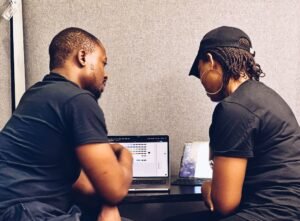Prompting vs Probing
When it comes to effective communication and gathering information, two commonly used techniques are prompting and probing. Understanding the differences between these methods and knowing when to use each can greatly improve your ability to extract valuable insights and have more meaningful conversations.
Key Takeaways:
- Prompting: Encourages a direct response from the speaker, typically through closed-ended questions or statements.
- Probing: Seeks to explore deeper or clarify information, often through open-ended questions.
- Prompting is useful for: Directed conversations, fact-finding, and confirming specific details.
- Probing is useful for: Encouraging expansive answers, uncovering underlying motivations, and exploring different perspectives.
The Power of Prompting
Prompting involves asking specific questions or providing statements that seek immediate responses. It is particularly helpful when you want to gather straightforward information or confirm specific details.
For example, asking “Did you complete the report by the deadline?” prompts a direct yes or no response, confirming the completion status.
Prompting allows for efficient communication by quickly obtaining precise answers and focusing the conversation on a specific topic or goal.
The Art of Probing
Unlike prompting, probing aims to encourage open-ended discussion and exploration. It involves asking questions that prompt individuals to think more deeply and provide thoughtful responses.
For instance, asking “What factors influenced your decision?” encourages the speaker to reflect on their thought process and consider multiple influencing factors.
Probing allows for greater analysis, understanding, and insight generation. It helps reveal additional information, motivations, and perspectives that may not have been initially apparent.
When to Use Prompting or Probing
Knowing when to use prompting versus probing can greatly enhance the effectiveness of your conversations and improve your ability to gather valuable information. Consider the following guidelines:
- Use prompting when:
- You need specific information or want to confirm details.
- You want concise, direct answers.
- You aim to keep the conversation focused and efficient.
- Use probing when:
- You want to encourage a more expansive response and deeper exploration.
- You seek to uncover underlying motivations or perspectives.
- You aim to engage in a more reflective or thought-provoking conversation.
Comparing Prompting and Probing Techniques
The table below summarizes key differences between prompting and probing techniques:
| Prompting | Probing |
|---|---|
| Seeks direct responses | Encourages thoughtful and expansive answers |
| Uses closed-ended questions/statements | Relies on open-ended questions |
| Confirms specific details or information | Explores motivations, perspectives, and underlying factors |
Examples of Prompting and Probing Questions
Below are some examples of prompting and probing questions to provide a better understanding of their applications:
| Prompting | Probing |
|---|---|
| Did you finish the assigned task? | Why did you choose that particular approach for the task? |
| Have you ever encountered this issue before? | How did your previous experiences shape your perspective on the issue? |
| Is there anything else you’d like to add? | Can you explain the reasoning behind your opinions? |
The Balance in Conversation
Effective communication involves finding the right balance between prompting and probing, depending on the situation and your objectives. It’s essential to adapt your approach and ask the right questions at the right time to foster meaningful exchanges.
Remember, combining the techniques of prompting and probing leads to valuable insights and a deeper understanding of others.

Common Misconceptions
Misconception 1: Prompting and probing are the same
Many people mistakenly believe that prompting and probing are interchangeable terms referring to the same action. However, there are distinct differences between the two.
- Prompting involves providing cues or hints to help someone remember or respond to a question or situation.
- Probing, on the other hand, entails asking deeper, open-ended questions to gather specific information or encourage critical thinking.
- While both techniques aim to elicit responses, they serve different purposes and use different approaches.
Misconception 2: Prompting and probing are unnecessary
Another misconception is that prompting and probing are unnecessary, and that people should be able to communicate their thoughts and feelings without any assistance.
- However, these techniques are essential for effective communication, especially in situations where individuals may struggle to express themselves verbally or find it difficult to recall information.
- Prompting can help bridge gaps in memory or language barriers, facilitating communication and ensuring accurate and complete responses.
- Probing allows for a deeper understanding of someone’s perspectives, experiences, or thought processes, leading to more meaningful and insightful conversations.
Misconception 3: Prompting and probing are intrusive
Some individuals believe that prompting and probing are invasive techniques that interfere with personal boundaries or privacy.
- However, when used ethically and respectfully, prompting and probing can enhance communication without crossing any boundaries.
- Prompting is designed to be supportive, encouraging individuals to recall information they may have forgotten or overlooked, without pressuring them.
- Probing, when done appropriately, allows people to express themselves freely and facilitates a deeper exploration of their thoughts and feelings.
Misconception 4: Prompting and probing are only useful in specific fields
Another common misconception is that prompting and probing techniques are only beneficial in certain fields or professions, such as counseling or interviewing.
- In reality, these communication strategies have broad applications and can be helpful in various contexts, including education, customer service, problem-solving, and decision-making.
- Prompting can assist students in retrieving information during exams, aiding customer service representatives in guiding clients towards solutions, or supporting individuals in making well-informed choices.
- Probing is valuable in fostering critical thinking skills among students, uncovering underlying issues in customer complaints, or encouraging employees to brainstorm innovative solutions.
Misconception 5: Prompting and probing are always effective
Lastly, many people assume that prompting and probing techniques guarantee successful communication outcomes every time they are employed.
- However, it is important to recognize that these techniques may not work equally well for everyone or in every situation.
- Some individuals may find prompting overwhelming or probing too invasive, impacting their ability to express themselves comfortably.
- Furthermore, effective implementation of these techniques relies heavily on the skill and sensitivity of the person using them.

Prompting Techniques Used in Interviews
Below is a list of various prompting techniques commonly employed in interviews. By using these techniques, interviewers aim to encourage respondents to provide more detailed and accurate information.
| Prompting Technique | Description |
|---|---|
| Silence | Allowing a period of silence to prompt the interviewee to continue speaking. |
| Repetition | Repeating a question or statement to nudge the interviewee to elaborate further. |
| Clarification | Asking for clarification or additional details to ensure a thorough response. |
| Active Listening | Using verbal and non-verbal cues to show the interviewee that their input is valued, encouraging them to expand on their answers. |
| Summarization | Summarizing the interviewee’s previous response to stimulate further discussion. |
| Probing Questions | Asking open-ended questions to explore a topic in more depth. |
| Assumptive Questions | Posing questions with assumptions to encourage the interviewee to either agree, disagree, or provide more information. |
| Reflective Questions | Encouraging interviewees to reflect on their experiences and provide deeper insights. |
| Empathetic Statements | Using empathetic statements to create a safe environment for interviewees to express their thoughts and feelings more openly. |
| Non-Verbal Prompts | Using gestures, facial expressions, or eye contact to prompt the interviewee to continue speaking or to show interest. |
Probing Techniques Utilized in Surveys
Probing techniques are vital in surveys as they help researchers gather more comprehensive and accurate data. The table below showcases several probing techniques commonly employed in survey research.
| Probing Technique | Description |
|---|---|
| Follow-up Questions | Asking additional questions to explore a respondent’s initial response more deeply. |
| Multiple Choice Options | Providing a range of options for respondents to choose from, enabling them to further elaborate on their preferences. |
| Scale Questions | Using Likert or other scales to assess respondents’ opinions or attitudes on a particular subject. |
| Branching Questions | Employing conditional questions to direct respondents to specific sections based on their previous answers. |
| Probing Statements | Presenting statements that elicit a respondent’s opinion or reaction, prompting further discussion. |
| Visual Aids | Including images, diagrams, or graphs to aid respondents in providing more accurate and detailed information. |
| Ranking Questions | Asking respondents to rank items according to their preferences or importance, fostering deeper insight. |
| Follow-up Emails | Sending follow-up emails to survey participants, giving them an opportunity to expand on their initial responses. |
| Demographic Questions | Gathering information on respondents’ characteristics to support data analysis and segmentation. |
| Open-Ended Questions | Allowing respondents to freely express their thoughts and opinions, uncovering unique insights. |
Prompting vs. Probing: A Comparative Analysis
In interviews and surveys, both prompting and probing techniques play essential roles in obtaining rich and accurate data from respondents. While prompting techniques aim to encourage interviewees to elaborate, probing techniques used in surveys allow respondents to reflect on and express their opinions more extensively. By employing a combination of both techniques, researchers can gather comprehensive and genuine insights, providing a more complete understanding of the subjects under study.
Frequently Asked Questions
Prompting vs Probing
- What is prompting?
- Prompting refers to providing direct cues or hints to help a person recall information or complete a task. It is a technique often used in teaching and learning to assist individuals in remembering or performing certain actions.
- What is probing?
- Probing refers to asking probing questions or engaging in deeper exploration to obtain additional information or clarify existing knowledge or understanding. It involves delving into a subject or topic to uncover insights or gather more comprehensive information.
- How does prompting aid in learning?
- Prompting can support learning by providing learners with cues or reminders that trigger the retrieval of information from memory. It helps bridge the gap between what is already known and what needs to be recalled, facilitating the retrieval process and enhancing overall memory performance.
- When is probing useful?
- Probing is useful in situations where deeper understanding, insights, or more comprehensive information is desired. It is commonly employed in research, interviews, coaching, and therapy sessions to explore motivations, thoughts, feelings, or underlying causes and influences.
- Are prompting and probing mutually exclusive?
- Prompting and probing are not mutually exclusive. While they represent distinct techniques, they can complement each other in various contexts. Prompting can precede probing, setting the stage for deeper exploration, and probing can uncover the need for prompting by revealing gaps or misunderstandings in knowledge or memory retrieval.
- Can prompting be overused?
- Yes, prompting can be overused. Heavy reliance on prompting without allowing individuals to independently recall or retrieve information can hinder the development of effective memory strategies or critical thinking skills. It is important to strike a balance between providing sufficient cues and fostering independent learning and problem-solving.
- What are the benefits of probing over prompting?
- Probing encourages critical thinking, reasoning, and deeper understanding. It fosters independent thought and exploration, facilitating the development of problem-solving skills and analytical abilities. Probing can uncover hidden insights, reveal different perspectives, and promote higher-order thinking.
- Can prompting and probing be used together?
- Yes, prompting and probing can be used together in a complementary manner. Effective instruction often involves a combination of prompting and probing techniques to support the learning process. Prompting can lay the foundation by providing initial cues, and probing can be employed to deepen understanding, prompt critical thinking, or elicit more detailed responses.
- Do prompting and probing have any limitations?
- Prompting and probing techniques have their limitations. Overreliance on prompting may lead to shallow learning or dependence on external cues, while excessive probing may overwhelm learners or disrupt the flow of conversation. It is essential to adapt these techniques based on individual needs, contexts, and desired learning outcomes.
- Can prompting and probing be used in different settings?
- Yes, prompting and probing can be utilized across various settings, including educational environments, interviews, counseling sessions, team collaborations, and problem-solving activities. The specific application and effectiveness of these techniques may vary depending on the context and intended outcomes.




